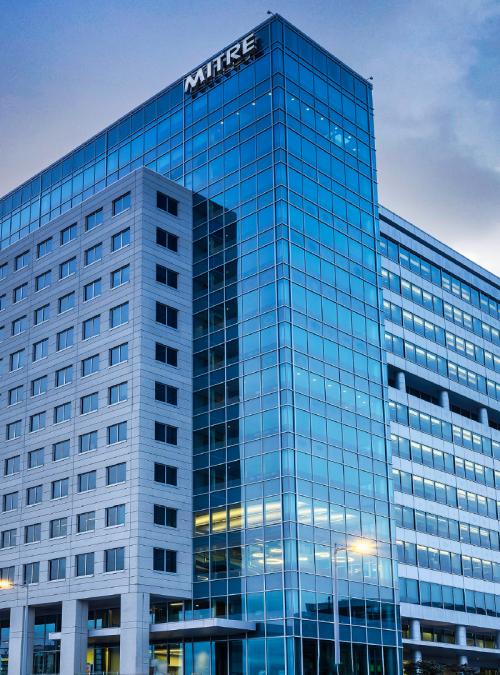
MITRE 360 May
May 2025
“We need to work at the speed of combat, not committee,” Admiral Samuel Paparo, Commander of the U.S. Indo-Pacific Command, said at the defense acquisition summit hosted at our headquarters in McLean, Va., earlier this month.
The event drew leaders from across the defense ecosystem to discuss the purchase and life cycle management of equipment and systems for military use. Paparo was among dozens of speakers who encouraged haste in modernizing the process as geopolitical tensions rise.
MITRE is driving the conversation, identifying systemic changes to clear the path for defense innovation.
Why it matters: The warfighter should have the best technology at their fingertips, but a bureaucracy focused on regulations and requirements gets in the way. Current acquisition models make it nearly impossible for start-ups with fresh ideas to break into the market. The system needs reform (and fast) to keep up with the changing face of warfare.
7-minute read time
PIN DROP
Taking a Sledgehammer to Defense Acquisition
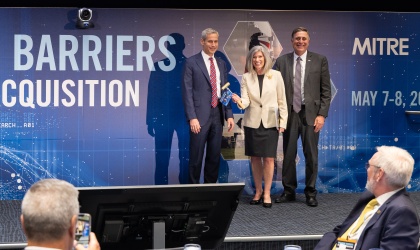
A golden sledgehammer given to Sen. Joni Ernst (R-Iowa) by MITRE’s vice president of national security, Keoki Jackson, symbolized the “breaking barriers” theme of our defense acquisition summit.
Joseph Welch, deputy to the Commanding General, U.S. Army Futures Command, noted that the process fails to lead with the question, “What’s the warfighter problem we’re trying to solve?” Instead, requirements and specifications distract from mission objectives.
What’s next: The summit was a call to action, zeroing in on the best ways to tackle the complexities of defense acquisition. MITRE is working with industry and government to streamline how we deliver capability at mission speed.
SURVEY SAYS
Defense Acquisition—Out with Challenges, in with Opportunities
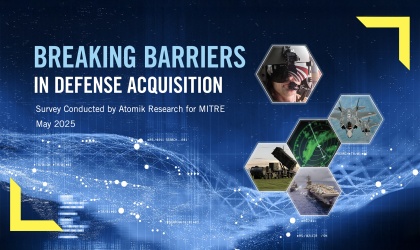
Complex. Redundant. Inflexible. These are a few of the adjectives that resonated with respondents to a recent survey we conducted with Atomik Research about defense acquisition. More than 1,000 professionals from the defense industrial base were asked a battery of questions about their experience—and they didn’t pull punches.
All respondents emphasized the need for reform; however, executives from small- and medium-sized business expressed a unique perspective underscoring disparities within the system. Compared to other stakeholders, they perceive lower resource efficiency and slower delivery speeds.
Bottom line: Our survey data punctuates the pressing need to reduce bureaucracy and adopt modern digital technologies to strengthen the defense ecosystem. Read: A faster process with less red tape invites more innovative companies to make better tools for the warfighter.
QUOTABLE

ALPHABET SOUP
Cost, Acquisition, and Management Sciences Innovation Center (CAMS)

Shopping is hard when you’re the government. In addition to deciding what products and services best serve your purpose, you’re up against thousands of vendors promising you the world. Choosing what to acquire and/or create requires a slew of tailored, multidisciplinary analyses.
That’s where MITRE’s CAMS experts come in, providing risk analysis, project leadership, cost estimation, contract strategy, and more to ultimately ensure federal purchases are effective and affordable.
FREE RESOURCE
Empowering a Global Community of Cyber Defenders
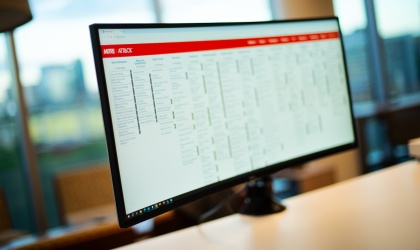
Challenge: Cybercrime is skyrocketing and wreaking economic havoc in its wake. The International Monetary Fund predicts the annual average cost of attacks to hit more than $23 trillion by 2027. As adversaries become increasingly sophisticated, keeping pace becomes exponentially more challenging.
Picture “whack-a-mole”—a cybersecurity team barely getting a handle on one attack method before another pops up. Exhaustive defense efforts require time and resources that many organizations simply don’t have.
Solution: MITRE crowdsources cyber threat information—adversary tactics and techniques—from a global community of contributors, then validates and organizes it to share back to the public in a digestible, universally understood language. ATT&CK® is a free, easily accessible, comprehensive encyclopedia that offers defenders a rubric for recognizing, responding to, and mitigating intrusions.
Impact: ATT&CK is used in more than 190 countries on all seven continents by everyone from mom-and-pop shops to the top 10 Fortune 500 companies (including Walmart, Amazon, Microsoft, and Google).
Through cyber attack prevention, the framework saves private companies and government agencies hundreds of millions of dollars each year.
NEXT-GEN CYBER
Competition Centered on Securing Our Most-Used Electronics
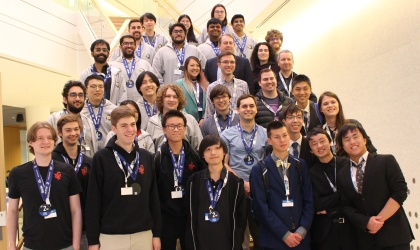
Take a moment to look around you—your phone, your electronic car key, your smart watch. As consumers, we expect these ubiquitous tools to be both secure and reasonably priced. But most can’t be both. Security measures often get sacrificed for low-cost manufacturing, which means that many of the devices we rely on daily are ripe for hacks.
Enter Embedded Capture the Flag (eCTF), a competition MITRE created a decade ago that convenes hundreds of eager young people from dozens of academic institutions. The high school and college students spend a semester developing secure embedded systems, which they then try to hack. This year, out of 123 schools from 17 countries—a record number of participants—Carnegie Mellon University came out on top.
More devices, more hacks, more talent needed: As the real-world need for talent grows in this multibillion-dollar market, the goal of eCTF is to drum up interest from a new generation of cybersecurity professionals.